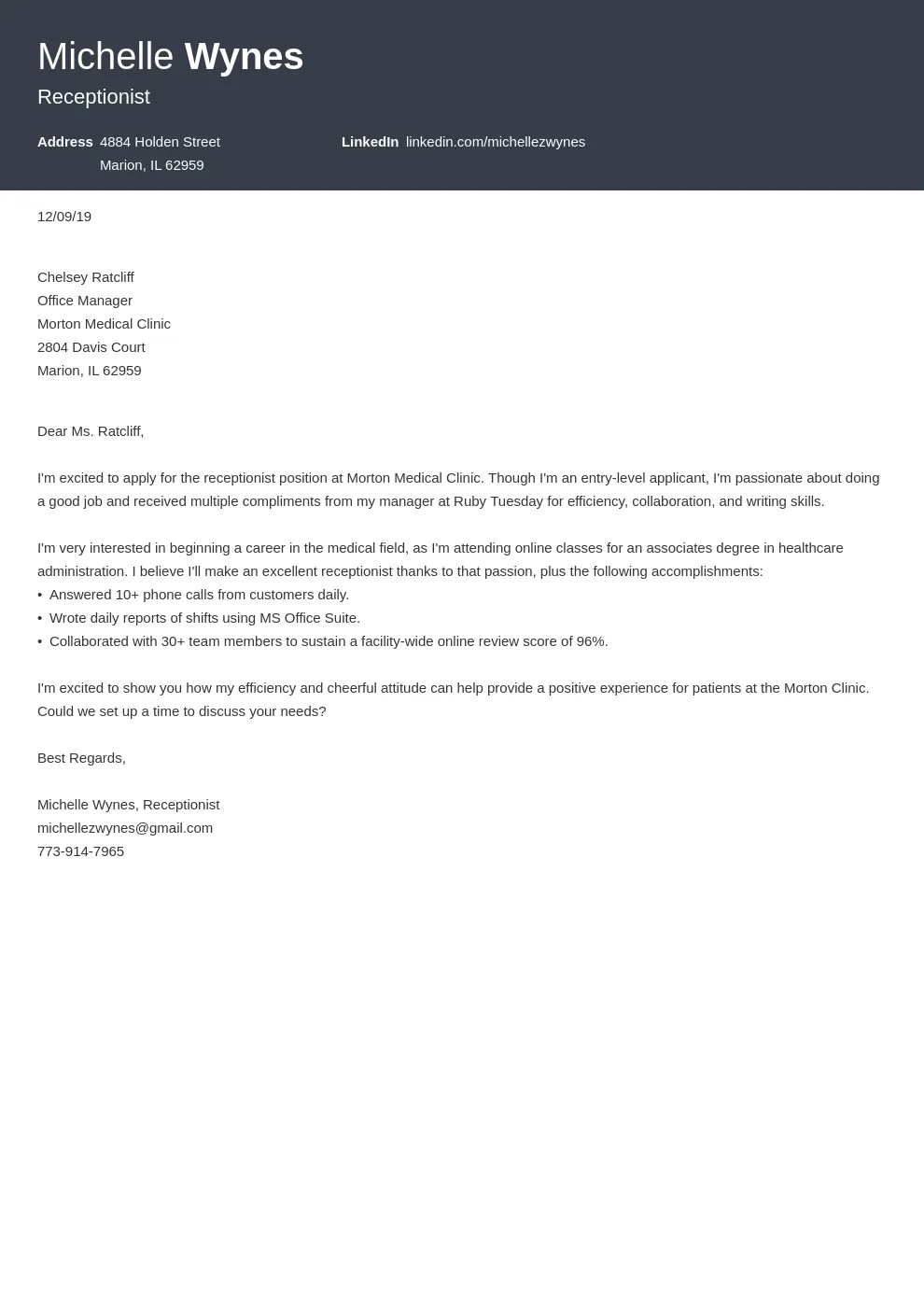Understanding the No Experience Cover Letter
Navigating the job market without prior professional experience can feel daunting. However, a well-crafted cover letter is your secret weapon. It’s your chance to showcase your potential, highlight relevant skills, and demonstrate your enthusiasm for the role. This guide will provide you with top examples of cover letters for individuals with no experience, helping you to craft a compelling narrative that captures the attention of hiring managers and increases your chances of landing an interview. Remember, your cover letter is not just about what you haven’t done, but what you can do.
What is a No Experience Cover Letter?
A no experience cover letter is a document you submit along with your resume when applying for a job, particularly when you lack traditional work experience. Its primary purpose is to introduce yourself to the hiring manager, express your interest in the position, and demonstrate why you are a suitable candidate, even without a long employment history. Unlike a resume, which is a factual summary of your past, a cover letter allows you to tell a story, explain your motivations, and connect your skills to the job requirements. It’s a chance to highlight transferable skills, educational background, and any relevant experiences like internships, volunteer work, or personal projects.
Why is a Cover Letter Important?
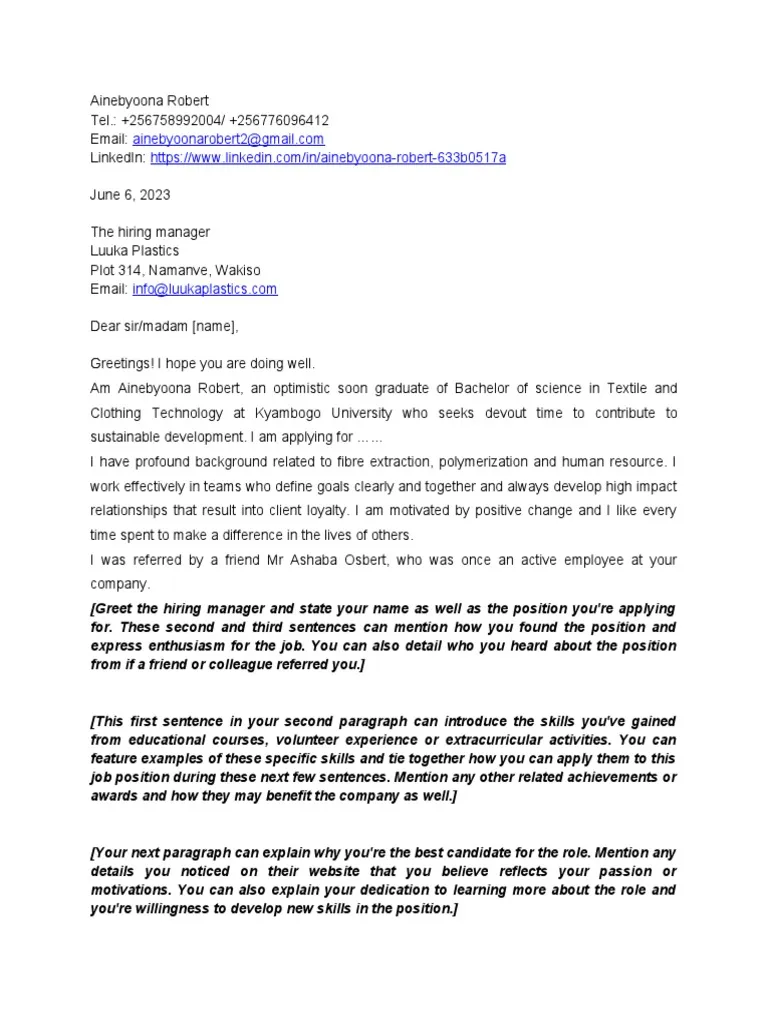
A cover letter is crucial because it provides context to your application. It allows you to explain gaps in your resume, elaborate on your skills, and personalize your application to the specific job and company. It’s a chance to showcase your personality, writing skills, and communication abilities. Many employers consider a cover letter a critical part of the application process, using it to assess your writing proficiency, attention to detail, and genuine interest in the role. Without a cover letter, you may miss the opportunity to make a strong first impression and effectively communicate your value to the employer. A strong cover letter can set you apart from other candidates, especially those with similar educational backgrounds but less direct experience.
Key Elements to Include in Your Cover Letter
A compelling no experience cover letter should include several key elements. Start with a professional header that includes your contact information and the date. Address the letter to the hiring manager by name, if possible; this demonstrates initiative and attention to detail. In the opening paragraph, clearly state the position you’re applying for and express your enthusiasm for the opportunity. The body of the letter should highlight your relevant skills, education, and any other experiences (like volunteering or projects) that align with the job requirements. Use specific examples to showcase your achievements and quantify your accomplishments whenever possible. Close the letter with a strong call to action, reiterating your interest and thanking the hiring manager for their time and consideration.
Highlighting Transferable Skills
Transferable skills are those that you’ve developed in one context but that are valuable in another. These might include communication, problem-solving, teamwork, time management, and leadership. When you lack direct experience, highlighting these skills is essential. Think about experiences from school projects, volunteer work, extracurricular activities, or even hobbies that have allowed you to hone these skills. For example, if you coordinated a group project, discuss how you managed deadlines, delegated tasks, and resolved conflicts. If you volunteered, emphasize your ability to work as part of a team, communicate effectively, and follow instructions. These examples show employers you can adapt and apply skills in the workplace even if you don’t have a traditional work history.
Showcasing Your Education and Training
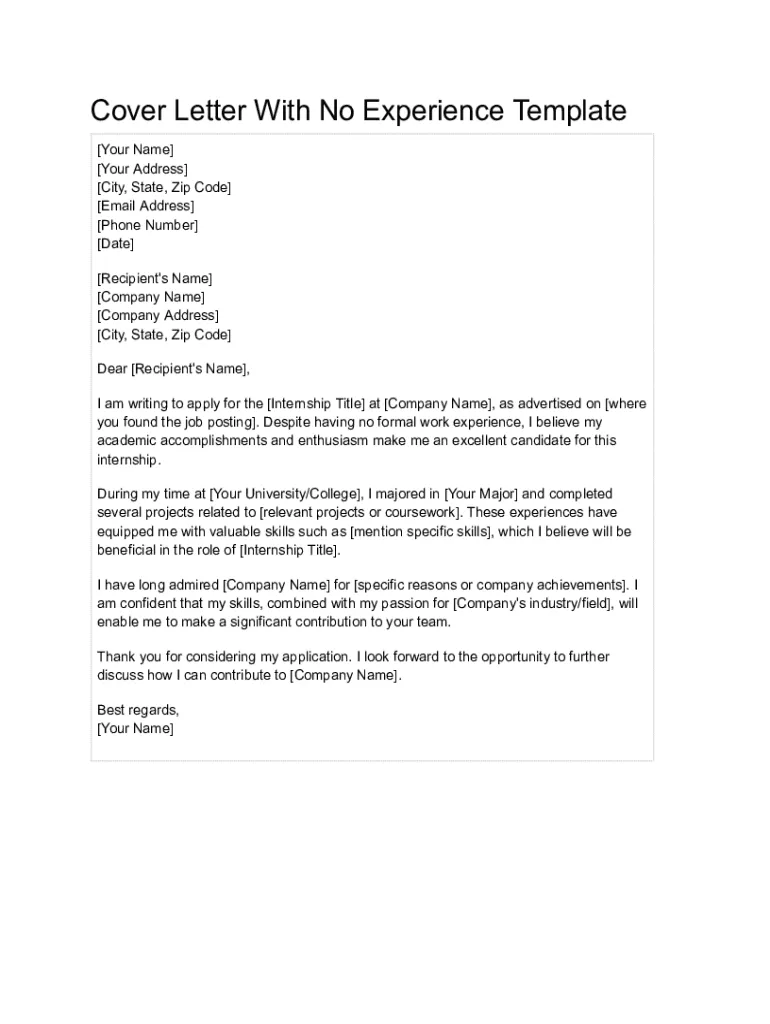
Your education and training are vital components of your cover letter. Provide details about your degree, certifications, or relevant coursework. Highlight any projects, research papers, or academic achievements that align with the job requirements. Even if your degree isn’t directly related to the role, you can discuss how your studies have equipped you with valuable skills like critical thinking, research, and problem-solving. Mention any relevant software, tools, or methodologies you’ve learned. Emphasize any honors, awards, or recognition you’ve received. If you’ve taken online courses or completed professional development programs, be sure to include those as they demonstrate a commitment to learning and self-improvement.
Demonstrating Enthusiasm and Motivation
Your cover letter should convey your genuine interest in the role and the company. Research the company and tailor your letter to show you understand their mission, values, and culture. Explain what excites you about the opportunity and why you believe you’d be a good fit. Express your willingness to learn and contribute. Show that you’ve thought carefully about how your skills and experiences align with the job responsibilities. A well-written cover letter that expresses your enthusiasm can significantly improve your chances, as it shows the hiring manager you are motivated to succeed. Use phrases like ‘I am excited about the opportunity to…’ and ‘I am eager to contribute to…’ to convey your enthusiasm.
No Experience Cover Letter Example 1
This example is for a recent graduate applying for an entry-level marketing position. The letter emphasizes academic achievements, relevant coursework, and projects completed during their studies. It highlights transferable skills like communication, project management, and data analysis gained through these experiences. The candidate should show how they actively participated in marketing campaigns or similar initiatives. They should mention any relevant software or platforms they’ve learned, like social media management tools or SEO applications. The letter should also mention the candidate’s interest in marketing and their understanding of the company’s brand and values.
Focusing on Soft Skills
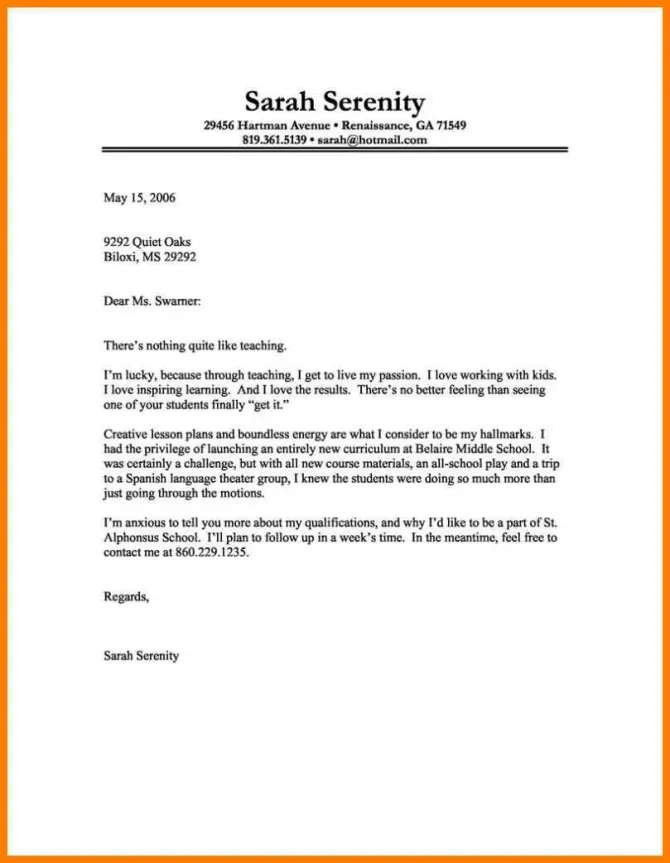
In this example, the focus is on soft skills such as communication, teamwork, and adaptability. The letter should include details on a specific team project or group activity, outlining the candidate’s role and the contributions made. They should explain how they solved problems and worked well with others to achieve a common goal. They should demonstrate active listening and clearly articulating ideas. For a marketing role, they could highlight an experience where they presented ideas to a group, handled feedback, and adjusted accordingly. The most important factor is showing the ability to work well with others, be a great communicator, and be open to feedback.
Highlighting Volunteer Experience
The cover letter in this example uses volunteer experience to demonstrate the applicant’s abilities. The volunteer experience could be in a variety of settings, such as a non-profit, a local community group, or a student organization. It’s important to highlight any leadership roles, such as coordinating projects, managing budgets, or leading a team. The candidate should explain how they gained relevant skills, such as fundraising, communication, or event planning. The letter should clearly state the organization’s goals and how the applicant contributed to achieving them. They could mention any recognition received for their volunteer work.
No Experience Cover Letter Example 2
This example is for someone applying for a customer service role. The letter should focus on the applicant’s ability to communicate effectively, solve problems, and provide excellent service. The candidate should highlight experiences where they assisted others, resolved conflicts, or provided support. They should be able to showcase their ability to actively listen, show empathy, and offer helpful solutions. This could include volunteer work, personal projects, or customer service positions. The letter should also demonstrate their enthusiasm for helping customers and their interest in the company’s values.
Tailoring Your Letter to the Job
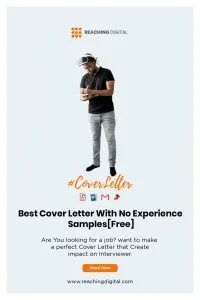
Every cover letter should be tailored to the specific job and company you are applying to. Do your research on the job description and understand the key requirements. Make sure to highlight any skills or experiences that align with the job duties. Use the company’s website, social media, and other resources to research its culture, mission, and values. Make sure that the letter addresses the hiring manager by name. The cover letter should provide a persuasive argument that demonstrates how you meet the job requirements. Make adjustments to your cover letter to reflect the specific needs of the role. This will show that you are focused, pay attention to detail, and are the right fit for the job.
Using Keywords Effectively
Using keywords from the job description will help your cover letter pass through applicant tracking systems (ATS). Identify the key skills, responsibilities, and requirements mentioned in the job posting. Integrate those keywords naturally throughout your cover letter. However, avoid keyword stuffing. The cover letter should be written to make it readable and easy to understand. Keywords are meant to help the reader know what they can expect to find. They can be used to highlight key qualifications or achievements to impress the hiring manager. Make sure your keywords match the job description.
No Experience Cover Letter Example 3
This example is for someone applying for an internship. The cover letter should focus on the applicant’s academic achievements, any relevant projects, and their motivation to learn. The candidate should highlight any projects completed during their studies. They should also demonstrate their interest in the company and its industry. The letter should also include their career goals and what they hope to gain from the internship. They should also emphasize their willingness to learn and work hard.
Quantifying Your Achievements (Even Without Experience)

Quantifying your achievements, even without direct work experience, is crucial. Even in projects, or volunteering, find ways to measure your impact. For example, if you organized an event, mention how many attendees you attracted or how much money you raised. If you were part of a team, quantify your contributions. This helps the reader see the value of your contributions and the impact that you made. Whenever possible, use numbers, percentages, and specific figures to showcase your accomplishments. It makes your qualifications more compelling and helps you stand out from the competition.
Showcasing Relevant Projects
Highlight relevant projects from your academic, personal, or volunteer life. Whether it’s a research project, a personal website, or a volunteer initiative, these demonstrate your abilities and interests. Briefly describe each project, explaining your role, the challenges you faced, and the results you achieved. Emphasize any skills you used during the project that align with the job requirements. Include any relevant details. By showcasing relevant projects, you provide concrete evidence of your skills and experience, even without traditional work history.
No Experience Cover Letter Example 4
This example is for someone transitioning careers. The cover letter should focus on transferable skills and experiences from the previous role. The candidate should emphasize any previous experiences that relate to the new role. They should focus on why they’re looking to transition careers. It should also highlight any relevant skills and education gained through their previous experience and demonstrate how those skills are transferable to the new role. The letter should showcase their motivation to change careers, highlight their transferable skills, and show their dedication to the new field.
Formatting Your Cover Letter for Impact

A well-formatted cover letter is easy to read and visually appealing. Use a professional font like Arial, Calibri, or Times New Roman. The standard font size is 11 or 12 points. Include your contact information in the header, along with the date. Use clear headings, bullet points, and white space to break up the text and enhance readability. Keep your paragraphs concise and to the point. Make sure there are no spelling or grammar errors. A well-formatted cover letter shows attention to detail and is a professional presentation. Use proper formatting to make your letter stand out.
Structuring Your Letter for Readability
The structure of your cover letter is important. Begin with a strong opening paragraph that grabs the reader’s attention. Then, move into the body paragraphs, showcasing your relevant skills, education, and experience. Use a concise, easy-to-follow structure. Each paragraph should focus on a specific point and include examples. Always use a professional closing paragraph that reiterates your interest and encourages the hiring manager to contact you. A well-structured cover letter is easy to read, makes a clear argument for your candidacy, and improves your chances of getting an interview.
No Experience Cover Letter Example 5
This example is for someone looking for a part-time job. The cover letter should focus on demonstrating the candidate’s availability, reliability, and willingness to work. It should highlight any experience in customer service, retail, or hospitality. The letter should also showcase how they meet the requirements. The candidate should clearly state their availability and commitment. They should state their motivation and interest in the part-time position.
Proofreading and Editing Your Cover Letter
Proofreading and editing is critical for any cover letter. Errors and typos can undermine your credibility. Carefully proofread your cover letter for spelling, grammar, and punctuation errors. Read the letter aloud to catch any awkward phrasing or unclear sentences. Have someone else review your letter for you. Use online grammar checkers such as Grammarly. Take the time to proofread and edit your cover letter before submitting it, as it could make a huge difference.
Tips for a Successful Cover Letter
Here are some tips for a successful cover letter. Tailor your cover letter to each job, and don’t use a generic template. Research the company and the hiring manager. Show your enthusiasm for the position and the company. Use keywords from the job description. Quantify your accomplishments whenever possible. Highlight your transferable skills, education, and relevant experiences. Proofread your cover letter carefully. Keep the letter concise, clear, and easy to read. Consider using a professional template for formatting. Always follow up after you submit your application.
Researching the Company
Researching the company before writing your cover letter is essential. It will demonstrate your genuine interest in the role and help you tailor your letter to their specific needs. Use the company’s website, social media profiles, and news articles to learn about their mission, values, culture, and recent projects. Show that you understand the company’s goals and how you can contribute to their success. Look for ways to align your skills and experiences with the company’s values. This research allows you to write a more impactful and tailored cover letter.
Following Up After Submission
Following up after submitting your cover letter and resume demonstrates your interest and initiative. A week after submitting your application, send a polite email to the hiring manager. Reiterate your interest in the position and inquire about the status of your application. Keep it brief and respectful. If you haven’t heard back after a reasonable time, you can send a follow-up email. Following up shows that you are proactive and enthusiastic. However, avoid excessive follow-up as it can be perceived as aggressive. Always follow up in a timely and professional manner.
